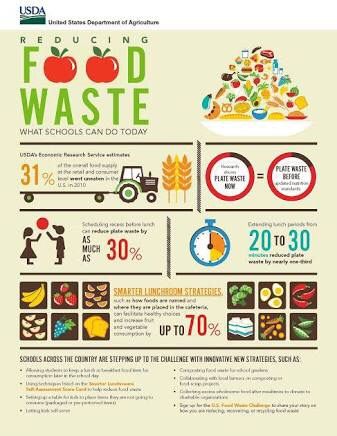Around 88 million tonnes of food is wasted in the EU every year, but we can all take action by changing the way we shop for, cook, and plan our meals to avoid wasting food, money, and resources.1
A6B9C599-E932-483B-911B-7DBE34196343.jpeg]( )/A6B9C599-E932-483B-911B-7DBE34196343.jpeg
)/A6B9C599-E932-483B-911B-7DBE34196343.jpeg
- Buying too much?
It’s only a bargain if we can use the food in time! ‘Buy-one-get-one-free’ and other bulk deals lead to buying more than we need shifting the waste from the store to our home. In food waste terms, it’s wise not to buy more than needed.
Simple ‘grandma’s’ tricks can help us stay focused when shopping for food include.
Prepare a meal plan for the week.
Use a shopping list, noting the amounts required.
Factor in potential eating out occasions.
- How can ‘use by’ and ‘best before’ dates help me reduce food waste?
‘Use by’ date on packaged food tell us until when we can eat the product. After this date, it may not be safe. The use-by date is usually found on perishable foods such as chilled meat, dairy, and ready-made meals. To avoid wasting food these should be purchased when, and in the amount, necessary. It’s best not to stock up.
‘Best before’ dates are more flexible. After this date, foods such as dried beans, lentils, and pasta, can be consumed safely, although their quality may have decreased (for example, changes in flavour, colour, texture). Trusting our senses should be sufficient for foods with these labels.
- Food about to go off?
Not-wasting is not that complicated!
Check what’s in the fridge and cupboards regularly, and use up foods nearing their expiry dates.
Rotate food stores when fresh groceries arrive, so that those with nearer expiry dates are closer and visible.
Combine any vegetables left into a ‘clean-out-the-fridge’ pot of pasta, soup, omelette, or stir fry. We get to enjoy a new recipe and avoid throwing out good food.
Freeze food before its date. Frozen fruits can make a nice addition to smoothies!
- Cooked more than needed?
Here are some simple practices that help.
Serve small portions and come back for seconds, rather than scraping excess food from our plates into the bin.
Use leftovers for lunch the next day.
Freeze for later. For tastiest results, frozen leftovers should be used within three months (more on how to safely handle them here).2
Not enough leftovers for a whole meal? Mix and match from different meals, add some salad or bread, and a feast appears before us!
- Mouldy food?
If mould appears, whether we can still ‘rescue’ the food depends on what it is. The following general rules can help us know what to do.
Hard foods should be safe to consume once the mouldy part is removed along with the surrounding area. This includes hard cheeses, hard cured meats (such as salami and ham) and firm fruits and vegetables (such as cabbages bell peppers, root vegetables).
Soft foods should be thrown out once they start to mould. This includes cooked leftovers, soft cheeses, yoghurts and other dairy products, bread, jams and soft fruits and veggies (such as cucumbers, peaches, tomatoes, berries and so on).3 This is because mould can spread in soft foods (and we might not even see it).
- Still more food than we can eat?
If the food is still safe, our nature as social beings can play a part in the solution.
Ask around, friends or colleagues could make use of what we won’t.
Check if there are food banks around that accept donations and distribute them to people in need.
Invite neighbours over for a meal, it’s not only a nice way to gain new friends.
- What to do with unavoidable food waste?
Try to repurpose food scraps before they make it to the compost bin. Broccoli stems can be chopped and cooked just as well as the florets, and other scraps can be transformed into homemade stock!
For what can’t be saved composting is a natural process where microorganisms biodegrade food waste, turning it into a dark, earthy, nutrient-rich material that promotes healthy soil.
Community composting and separate food waste bins are a step in the right direction. We can check with our local government, to see what kind of food waste collection is available.
Or we can feed our own garden! Compost is an affordable organic alternative to purchased fertiliser, but it’s best to stick to plant-based foods (as meat and animal products could lead to undesired odours and pest visitors).4
Websites
Love Food Hate Waste (UK)
Too Good to Waste (UK)
Wonky veg boxes (UK)
FoodWaste (Ireland)
Stop Food Waste (Ireland)
Inglorious fruits & vegetables (France)
Stop Spild Af Mad (Denmark)
Eten Is Om Op Te Eten (the Netherlands)
Slang Inte Maten (Sweden)
Savethefood.com (USA)
Apps
Fridgely-Food Tracker: Get reminders of when food items are close to expiring, plus recipes.
Yo No Desperdicio (Spain): Local food exchange.
Offers on surplus food from local food shops:
Food Loop (Germany)
Afgeprijsd (the Netherlands)
YourLocal (Denmark)
Too Good to Go (UK)
Food Cloud (Ireland): Redistribution of surplus food from industry to charities.
Hi! I am a robot. I just upvoted you! I found similar content that readers might be interested in:
http://www.eufic.org/en/food-safety/article/reducing-food-waste-yes-we-can-qa
Downvoting a post can decrease pending rewards and make it less visible. Common reasons:
Submit
Yeah I copied from site anything wrong on that? If have then tell me
Downvoting a post can decrease pending rewards and make it less visible. Common reasons:
Submit
Congratulations @thrinadh! You have completed some achievement on Steemit and have been rewarded with new badge(s) :
Click on any badge to view your own Board of Honor on SteemitBoard.
For more information about SteemitBoard, click here
If you no longer want to receive notifications, reply to this comment with the word
STOPDownvoting a post can decrease pending rewards and make it less visible. Common reasons:
Submit